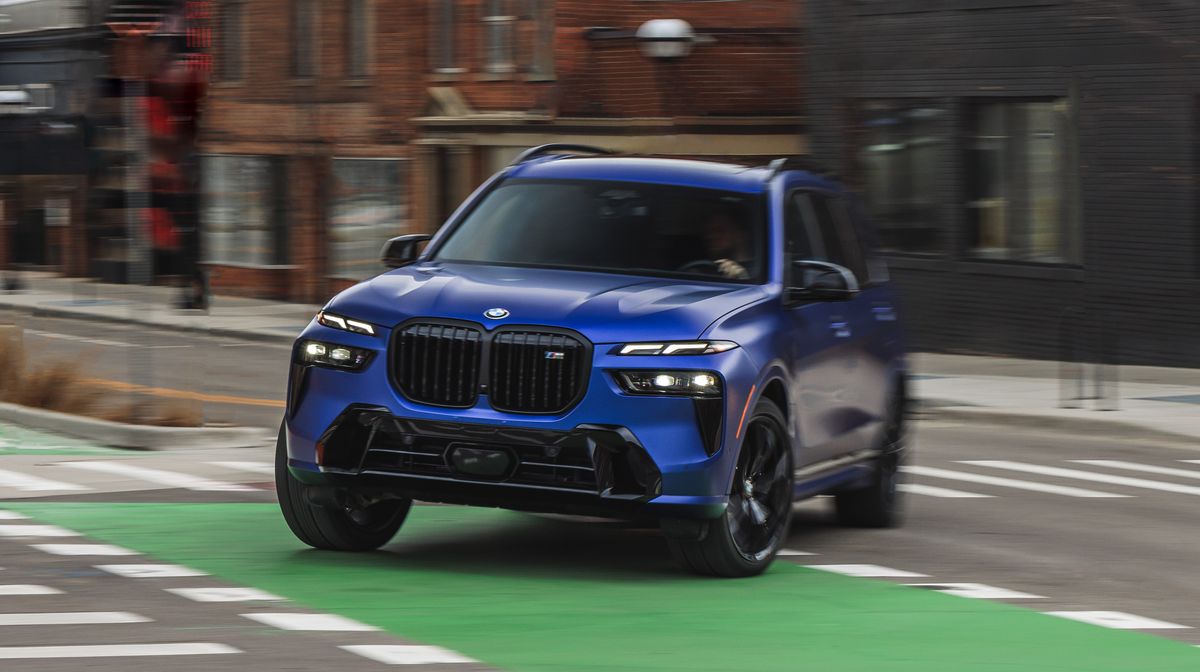Tested: 2023 BMW X7’s Weird New Face Belies the SUV’s Inner Beauty

Love it or hate it, BMW’s controversial styling is here to stay. The grilles keep getting bigger, the headlights keep getting weirder, and yet the brand’s sales remain strong. This time around, it’s the big X7 SUV’s turn for facial surgery. The 2023 model has an updated look meant to bring it in line with the new-generation 7-series sedan, and it’s polarizing. There’s more to the new X7 than revised front- and rear-end designs, however, as the model also sees upgraded engines, a spruced-up interior, and several new standard and optional features.
While the previous X7 looked pretty much like a stretched and inflated X5, the new front end makes a more distinct statement with its eyebrow-like daytime running lights above the squared-off headlights mounted lower on the fascia. BMW admits it’s not the first automaker to adopt this inverted-headlight look. We can’t help but notice that earlier vehicles that tried it, such as the Jeep Cherokee and the Nissan Juke, either quickly abandoned it or have been dropped altogether. Nonetheless, we won’t be surprised if the X5 and X6 eventually adopt this face too. Sigh.
The X7’s tail is more pleasing to the eye, as the added chrome bar and revised taillights make for a crisp appearance. There are also new wheel designs, including a massive 23-inch option for the first time. Those big rollers are best avoided, though, as the X7 we drove with the 23s rode harshly over big bumps. The 21- and 22-inchers ride better and still fill out the wheel wells just fine.
HIGHS: Strong V-8 engine, rich interior, drives smaller than it is.
Once again, the X7 offers a choice of six-cylinder or V-8 power. BMW says the vast majority of buyers choose the xDrive40i model with a turbocharged 3.0-liter inline-six, and that’s the engine that has received the more significant upgrades. It gains 40 horsepower and 52 pound-feet of torque for new totals of 375 horses and 383 pound-feet—now surpassing the Mercedes-Benz GLS450 in both regards. On top of that, a 48-volt hybrid system adds torque that juices the total up to 398 pound-feet. The twin-turbo 4.4-liter V-8 also gets the 48-volt system, but its output is unchanged at 523 horsepower and 553 pound-feet. Don’t be fooled by the V-8’s new M60i model designation replacing the previous M50i. BMW says this change in nomenclature was merely meant to align gas-engine trim levels with electric models, including the new iX M60.
To be fair, the M60i did live up to its bigger badge number by delivering better results at our test track. It got to 60 mph in 3.8 seconds, beating our long-term X7 M50i by 0.3 second, and ran through the quarter-mile in 12.3 seconds at 111 mph, a 0.4-second improvement. That 60-mph sprint is only 0.1 second behind the significantly more powerful, 612-hp 2021 Alpina XB7. But the Alpina does pack an even bigger, 630-hp punch for 2023, so it should be able to maintain its slim bragging rights.
